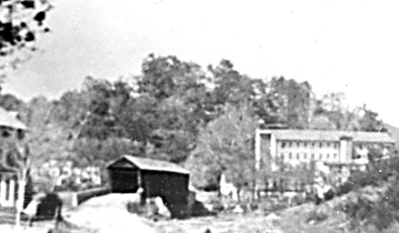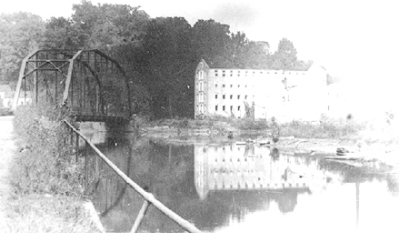 |
 |
| "This covered wooden bridge at the Warren Factory was destroyed in an 1895 flood. Source: Francis Roberts, photographer unknown, before 1895. Permission granted by Baltimore County Public Library. | "The shell of the five-story Warren Factory building and the iron bridge spanning the Gunpowder River are seen in this photo." Source: Francis Taylor Spilker, photographer unknown, 1922-1923. Permission granted by Baltimore County Public Library. |